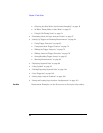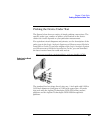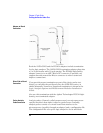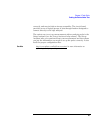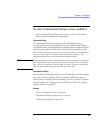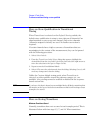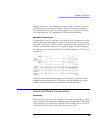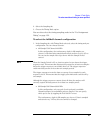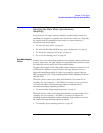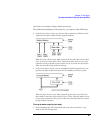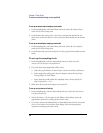
39
Chapter 2: Task Guide
To select transitional timing or store qualified
happen at this rate, two samples are stored (four at the fastest rate of
2.5 ns) for every transition. Therefore, with 2 K samples of memory, 1
K of transitions are stored. You must subtract one, which is necessary
for a starting point, for a minimum of 1023 stored transitions.
Maximum Transitions Stored
If transitions occur at a fast rate, such that there is a transition at each
sample point, only one sample is stored for each transition as shown by
time tags 17 through 21 below. If this continues for the entire trace, the
number of transitions stored is 2 K samples. Again, you must subtract
the starting point sample, which then yields a maximum of 2047 stored
transitions.
In most cases a transitional timing trace is stored by a mixture of the
minimum and maximum cases. Therefore, in this example the actual
number of transitions stored will be between 1023 and 2047.
Transitional Timing Considerations
Data Storage
When an edge is detected, two samples (four when sampling at 2.5 ns)
are stored across all channels assigned to the timing analyzer. The need
of two samples is to avoid loss of data if a second edge were to occur to
soon after the first edge for the edge detectors to reset.




